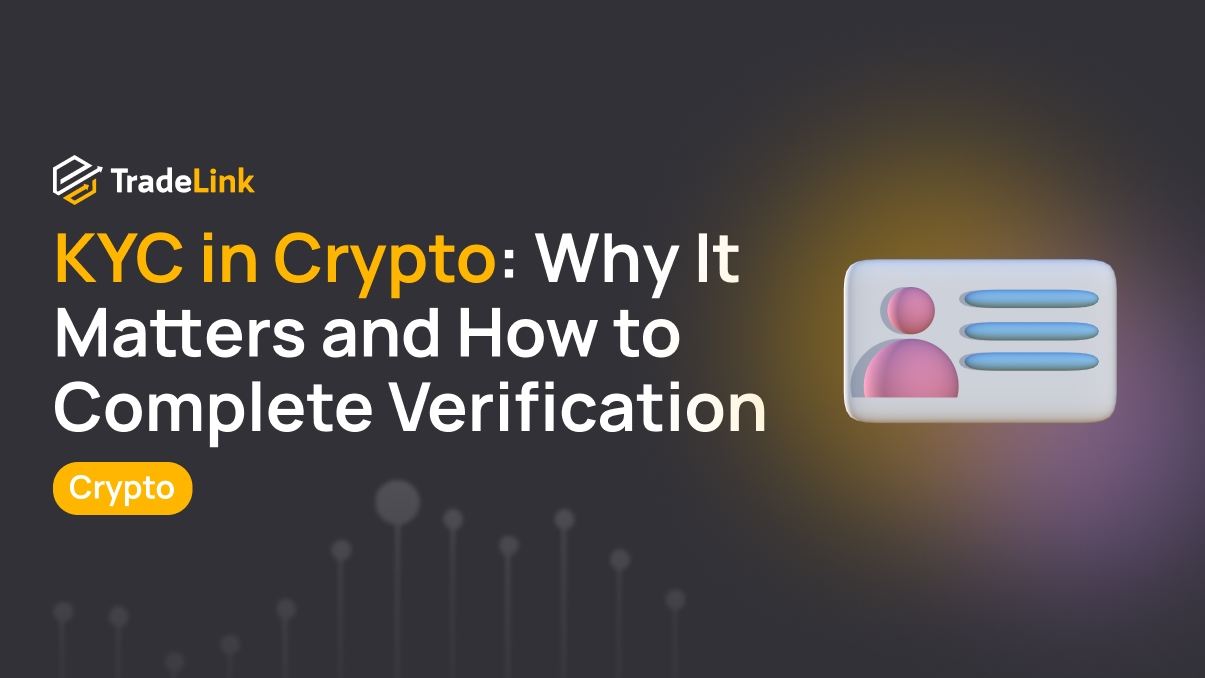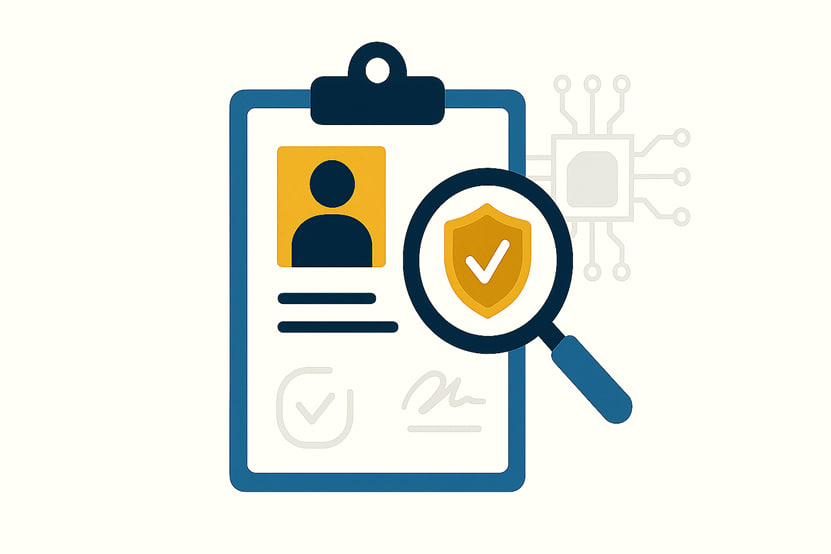KYC in Crypto: Why It Matters and How to Complete Verification

Contents
- Introduction
- What Is KYC in Cryptocurrency
- Why Is KYC Needed on Crypto Exchanges
- How the KYC Procedure Works
- Common Issues and Verification Challenges
- Conclusion
Introduction
When someone starts using cryptocurrency, they quickly encounter the requirement to complete verification. This process is called KYC. Exchanges, swap platforms, and wallets ask users to upload documents, provide personal information, and confirm their identity. It is impossible to trade, fund an account, or withdraw funds without this.
KYC plays a crucial role in the crypto world. It helps prevent fraud, protects users, and demonstrates that the platform operates within the law. Without such verification, there would be significantly more risks, especially in a sphere where money moves instantly and without intermediaries.
In this article, we’ll explore KYC, why it’s needed, how to pass it, and what difficulties users might face.
What Is KYC in Cryptocurrency

Understanding the KYC Procedure
KYC stands for Know Your Customer. This rule requires that a platform must know precisely who is using it. In cryptocurrencies, an exchange or swap service must collect client data: name, date of birth, nationality, and a copy of a passport or other official document. Often, a selfie and proof of address are also required.
The KYC process is not just a formality. It protects the market from fraud, money laundering, and other criminal activities. If a platform doesn’t verify its users, it risks becoming a hub for illegal operations. That’s why identity verification has become a standard for all primary crypto services.
Legal Foundation
International organizations monitor financial company behaviour. One key is FATF (Financial Action Task Force), which creates global standards to reduce financial crime. Among these are mandatory KYC procedures and client transaction monitoring.
In many countries, these standards have been written into law. For example, crypto exchanges are legally required to verify their users in India, the European Union, the U.S., and other regions. Governments can block their operations or issue fines if they don’t comply. This applies not only to centralized platforms but also to some wallets and services where digital assets can be exchanged or stored.
Thus, KYC is not just an internal policy but a legal requirement backed by national laws and international standards. Without it, a platform cannot operate openly or safely.
Why Is KYC Needed on Crypto Exchanges
Anti-Money Laundering (AML)
KYC is directly linked to AML policies. Banks and traditional exchanges have long used these measures, but they are significant in crypto. Here, funds can be transferred without restrictions, which attracts fraudsters. Platforms implement identity verification to prevent criminals from using crypto exchanges to launder illicit money.
When a user completes KYC, the exchange obtains enough information to monitor for suspicious activity. For example, if someone tries to cash out a large amount right after receiving it from an unknown source, the system may block the transaction and report it to a regulatory authority. Without KYC, such oversight would be impossible.
Many countries require crypto services to follow AML regulations. An exchange can lose its license or face sanctions if it violates these rules. As a result, even new platforms increasingly require verification before allowing trading.
User and Platform Protection
KYC isn’t just about legal compliance. It also helps protect honest users from theft and fraud. Without verification, anyone could create multiple fake accounts, deceive other users, and disappear without consequences. KYC makes such schemes nearly impossible.
Furthermore, verification makes it easier to recover account access. If a user forgets their password or gets hacked, the exchange can compare data and restore access to the rightful owner. Without documents, this would be difficult or impossible.
Platforms that use KYC appear more trustworthy to new users. People are more willing to deposit funds where the rules are transparent and identities are protected. This increases confidence and helps stabilize the market.
Using a KYC-Verified Account Across Platforms
Many services require separate verification even if the user already has a verified exchange account. However, there are more convenient options.
For example, TradeLink Marketplace — a platform where users can copy professional traders’ strategies and earn passively — does not require repeating the KYC process. Instead, you can link your verified Binance, ByBit, or OKX account via API.
It’s simple: if you already have a confirmed account, you instantly gain access to the platform’s features. This is convenient for users who want to trade without unnecessary steps or restrictions.
How the KYC Procedure Works

Required Documents
Each exchange has its requirements, but most often you will need to provide one or more of the following documents:
-
Passport or national ID
-
Driver’s license
-
Proof of address (e.g., utility bill or bank statement)
Document photos must be clear. Your face, name, date of birth, and document number must be legible. If the image quality is poor, the verification may be rejected.
Some platforms require a selfie with the document in hand. This reduces the risk of forgery and ensures the document belongs to the person applying.
Step-by-Step Verification
Step | What Happens |
Account Registration | Creating an account with an email and phone number. |
Verification Prompt | You are prompted to start KYC. Mandatory on some platforms. |
Upload Documents | Upload a photo of your ID and a selfie. |
Address Confirmation | Some platforms require proof of residence. |
Review Process | The system reviews the submission. It can take minutes to days. |
Verification Result | If approved, your account is marked “verified” and full access is granted. |
Completing KYC may seem complicated, especially for beginners. However, it is a standard one-time procedure that ensures long-term security. The sooner you complete it, the faster you can fully use the platform.
Common Issues and Verification Challenges

Frequent Mistakes When Uploading Documents
While the KYC process seems straightforward, many users experience rejection. The causes are often the same, and knowing them in advance can help you save time.
Common mistakes include:
-
Blurry images: Document photos must be high quality. The system can’t read the data if the text is unclear or the lighting is poor.
-
Reflections and shadows: Glare from lamps or sunlight distorts the image. Use soft lighting and shoot on a flat surface.
-
Data mismatch: Sometimes, users manually enter their names, and they don’t match the document. Even a small error can cause rejection.
-
Expired documents: The document must be valid. Expired IDs will be rejected.
-
Edited images: If the photo appears cropped or edited, it will likely be flagged as suspicious.
To avoid problems, follow the platform instructions carefully. Upload original images without filters and at full resolution. Always double-check your input to prevent typos.
Review Timelines and Processing Algorithms
Verification time varies depending on the platform, system load, and data accuracy. On average, it takes from a few minutes to three days.
Factors that affect speed:
-
Clarity and quality of uploaded images
-
Accuracy of entered information
-
Time zone (processing may be delayed at night or on weekends)
-
Platform queue length
Some exchanges use automated verification systems. These are faster but may still require manual review. In such cases, delays are possible. If documents are rejected, the platform usually explains why.
Don’t resubmit the same images — retaking them according to the feedback is better.
Conclusion
The KYC process has long been mandatory in the cryptocurrency industry. It helps exchanges comply with laws, prevent money laundering, and protect users. While some view it as an unnecessary step, in practice, KYC reduces risks and makes the market safer.
It’s best to complete verification right after registration. This gives access to all features and reduces the chance of future issues. The key is to prepare your documents, follow the instructions carefully, and take your time. The more precise each step is, the faster the approval.
KYC is not just a formality — it’s a crucial step that shows a platform values safety and operates with integrity. This is what sets trustworthy crypto services apart from questionable ones.